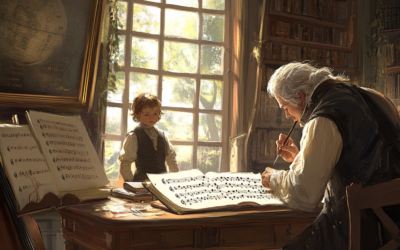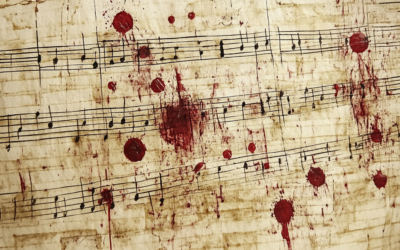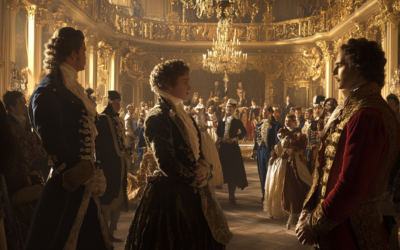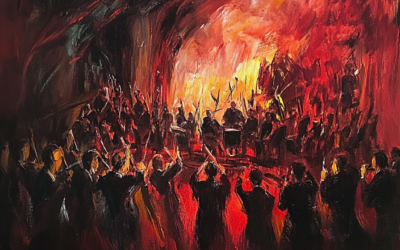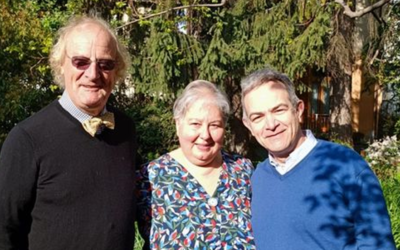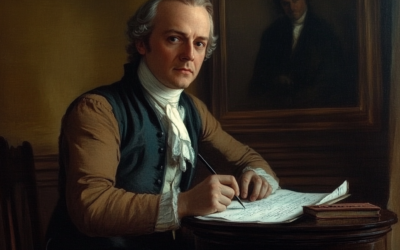The Adélaïde Deception
Mozart’s “Lost” Violin Concerto and the Art of Musical Forgery
In the early 20th century, the “discovery” of Mozart’s sixth violin concerto in Paris created a sensation. Dubbed the Adélaïde Concerto and supposedly written for Madame Adélaïde of France, it was hailed as a testament to Mozart’s genius. However, as the story unfolds, it becomes clear that this masterpiece was not the work of the child prodigy but rather a carefully orchestrated hoax by Marius Casadesus. Despite its unmasking as a forgery, the concerto continues to captivate audiences, raising questions about authenticity and the music industry’s willingness to deceive for profit.
Mozart: The Fall of the Gods
This book compiles the results of our studies on 18th-century music and Mozart, who has been revered for over two centuries as a deity. We dismantle the baseless cult of Mozart and strip away the clichés that falsely present him as a natural genius, revealing the contradictions in conventional biographies. In this work, divided into two parts, we identify and critically analyze several contradictory points in the vast Mozart bibliography. Each of the nearly 2,000 citations is meticulously sourced, allowing readers to verify the findings. This critical biography of Mozart emerges from these premises, addressing the numerous doubts raised by researchers.
"Even when proven false, the myth of Mozart prevails—because who wants the truth when the lie is so much sweeter?"
Mozart: The Fall of the Gods
The Discovery of a “Genius” Piece
In the early 20th century, the world of music was abuzz with the discovery of what was claimed to be a lost Mozart violin concerto. Named Adélaïde, this piece emerged from the depths of a Parisian safe that belonged to an elderly lady. The story goes that the concerto was composed in 1766 for Madame Adélaïde, the daughter of King Louis XV, during Mozart’s visit to Paris. The dedication, penned in a flowery and deferential style typical of the time, supposedly attested to the authenticity of the work. The sheer excitement of unearthing another piece from Mozart’s early years was enough to ignite a frenzy, leading to its publication in 1930 and subsequent performance with the Paris Lamoureux Orchestra.
The music world, eager for a new “genius” revelation, was quick to accept the piece. Paul Le Flem, a respected composer, confidently hailed it as an “extraordinary revelation of Mozart’s genius.” With a famous conductor like Albert Wolff and the support of celebrated violinist Yehudi Menuhin, who recorded the piece in 1934, Adélaïde swiftly entered the canon of Mozart’s works. It was officially catalogued as K.Anh.294a in the Köchel catalogue of 1964, a move that seemed to seal its authenticity. Once again, Mozart’s mythical genius was affirmed, and the concerto became a favourite in violin repertoires worldwide.
When Truth and Fiction Collide
But what happens when the truth comes out? Marius Casadesus, the man who had supposedly “discovered” and revised the concerto, later revealed that he was the actual composer. The music was not penned by a ten-year-old Mozart; it was a modern fabrication. Casadesus, initially offended by his lack of recognition and monetary gain from record sales, confessed to the deception. His motivation was clear—he had aimed to test the credulity of a music world hungry for myths, and he succeeded beyond his expectations.
The confession rocked the academic and musical community, exposing how easily experts could be deceived when confronted with a narrative that suited their preconceived notions. Musicologist Friedrich Blume had defended the concerto’s authenticity despite never having seen the manuscript. His rationale? The piece’s complexity and style were deemed entirely plausible for a child prodigy like Mozart. The eagerness to believe in Mozart’s “superhuman” abilities blinded scholars to the lack of concrete evidence, allowing a modern hoax to masquerade as an 18th-century masterpiece.
A Legacy Built on Lies
Even after Casadesus’s confession, the Adélaïde Concerto retained its allure. It remained in performance schedules, and record companies continued to sell it under Mozart’s name. Despite being reclassified as an apocryphal work (Anh 294a/C 14.05), the public still embraced it, clinging to the comforting illusion that it was a genuine piece by Mozart. Why? Because myths, once embedded, are hard to dislodge—especially when they feed the narrative of an infallible genius.
This is not an isolated incident in the history of music. Take, for example, the Adagio in G minor, attributed to Albinoni but actually composed by musicologist Remo Giazotto. The music industry has repeatedly capitalised on such forgeries, blurring the lines between truth and fiction to maintain commercial success. Record companies, eager to boost sales, have often been complicit, choosing not to disclose the real origins of these pieces. As long as the public is willing to accept the fiction, they are more than willing to keep the story alive.
Mozart’s “Sixth” Violin Concerto: A Case Study in Credulity
The Adélaïde Concerto serves as a cautionary tale for musicologists and audiences alike. It reveals how the obsession with preserving the myth of Mozart as an unparalleled genius can override critical thinking. When the music fits the narrative, questions about its authenticity become irrelevant. Even after Casadesus’s admission, figures like Alfred Einstein continued to ponder whether the work could still be connected to sketches Mozart might have produced in his childhood. The urge to cling to the “Mozart legend” is powerful, and even when presented with proof of a forgery, many prefer to look the other way.
The legacy of the Adélaïde Concerto, now officially labelled as spurious, reflects the stubbornness of the music world’s Mozart obsession. As long as the name Mozart guarantees commercial success, truth seems to be a secondary concern. The music industry’s reluctance to provide transparent information only fuels this trend, allowing the public to bask in a comforting, albeit false, sense of historical and musical continuity.
You May Also Like
Leopold Mozart: A Portrait in Shadows
Leopold Mozart’s life was a whirlwind of ambition, deceit, and disappointment—a stark portrait of a man chasing success at any cost.
The London Pieces: Mozart or Make-Believe?
The London pieces, edited for modern tastes, lose their authenticity. Only the uncorrected originals show Mozart’s true early voice—naïve yet authentic.
The Myth of the “Viennese Classics”: Mozart’s True Heritage and the Empire’s Agenda
Mozart wasn’t the quintessential Viennese; rather, he was shaped by German heritage and an opportunistic empire that controlled music as fiercely as it did its people.
The Nationalistic Roots of the Philharmonic Legacy
Under Goebbels, the Berliner Philharmoniker became an instrument of Nazi propaganda, framing German composers as the supreme guardians of musical heritage.
Australian Scholars Confirm Our Findings on Mozart’s Forged Catalogue
Professor Martin Jarvis of Darwin University confirmed our long-held findings that Mozart’s personal catalogue is a forgery, during his recent lecture The Mozart Scam. Forensic analysis continues to unravel the myths surrounding Mozart’s legacy.
The Italian Journey
The Mozarts’ Italian journey of 1769 was not a leisurely Grand Tour but a strategic mission driven by ambition, navigating the treacherous roads of 18th-century Europe in pursuit of fame and fortune.


